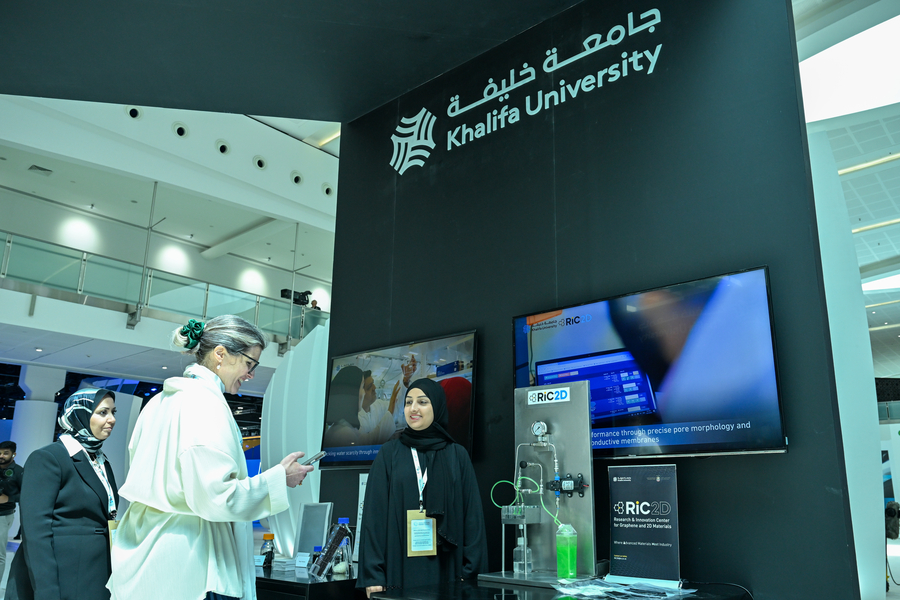Fundamental Study on ‘Nanoscale Energy Dissipation’ Carried Out at Masdar Institute Chosen as One of the Best in 2011 by Esteemed Scientific Publication Nanotechnology
Abu Dhabi-UAE: 19 December, 2011 – Masdar Institute of Science and Technology, an independent, research-driven graduate-level university focused on advanced energy and sustainable technologies, today announced that a fundamental study on nanoscale energy dissipation carried out at the Masdar Institute has been chosen by the esteemed scientific publication Nanotechnology as one of the best in 2011.
The scientists group led by Matteo Chiesa, Associate Professor, Laboratory of Energy and Nano-Science (LENS) at Masdar Institute, include Sergio Santos of LENS, the leading author of the manuscript, and a group of collaborators including Dr. Victor Barcons, Joseph Font, Albert Verdaguer and Neil H. Thomson from Spanish and British universities.
The article titled ‘How localized are energy dissipation processes in nanoscale interactions’ is one of 21 accepted for publication within the nanotechnology domain developed by the Masdar Institute’s LENS in 2011. This article has been chosen for its impact by the editorial board of the Nanotechnology journal to be part of a special edition that collects the highest relevant articles from 2011. To underline the significance of the results presented in the study, one of the figure from the article was picked as the main cover for this special edition.
The article focuses on the degree or level of localization in nanoscale dissipative interactions. Written by the scientists, it presents a fundamental explanation of the area of interaction between a sphere of a radius of few nanometers and a surface of different material. This has implication for the study of energy dissipation at the nanoscale and thus on the quantification of properties of surfaces. For the nanotechnology community, this is a great achievement since it allows controlling or manipulating of the process at the nanoscale.
The Nanotechnology magazine is part of the not-for-profit society Institute of Physics (IOP) Publishing, which publishes a range of journals, websites and magazines. It has more than 60 journals that reflect the growth and interdisciplinary nature of scientific research and application, from topics as varied as nanotechnology, astronomy, mathematics, the biosciences and physics.
Dr Fred Moavenzadeh, President of Masdar Institute of Science and Technology, said: “The recognition from one of the most respected magazine indicates the significance of the advanced-level research work that is being conducted at LENS in Masdar Institute. We offer our heartfelt congratulations to our scientists and believe such recognitions will further motivate them to move forward with their pioneering work. We thank the country’s leadership for their support and will remain committed to further expanding our capacity building and human development efforts in the UAE.”
Dr. Matteo Chiesa, Associate Professor, LENS, Masdar Institute, said: “The work is of fundamental origin and by itself cannot be commercialized. However, there are other published works for which we have filed invention disclosures. Our research work on the area of interaction for each of the elementary dissipative processes can be pivotal in the development of advanced materials for various industries such as defense or energy. We are extremely honored that our paper has been chosen by the Editor of the Nanotechnology magazine as one of the best among all of those published in 2011.”
The research work calculates the effective area of interaction for each of the elementary dissipative processes. It then uses a figure of merit defined as M to quantify both the density of the energy dissipated and the level of localization of each dissipative interaction. Each process is shown to present a different pattern in M with decreasing separation between the colliding bodies from tens of nanometers to angstroms. Though the work is theoretical, it uses parameters that can be readily measured with an atomic force microscope.
The UAE-based scientists at Masdar Institute have been prominently featured in industry and scientific publications respected worldwide and avidly read by scientists and researchers. Prof Matteo Chiesa has already published his works in other scientific journals such as Nature Materials, Journal of Physics D and Solar Energy. Earlier, the prestigious ‘Science’ journal published for the first time a paper co-authored by a UAE-based scientist – Dr. Iyad Rahwan, Assistant Professor – Computing and Information Science, Masdar Institute.
Established as an on-going collaboration with the Massachusetts Institute of Technology (MIT), Masdar Institute integrates theory and practice to incubate a culture of innovation and entrepreneurship, working to develop the critical thinkers and leaders of tomorrow. With its world-class faculty and top-tier students, the Institute is committed to finding solutions to the challenges of clean energy and climate change.






